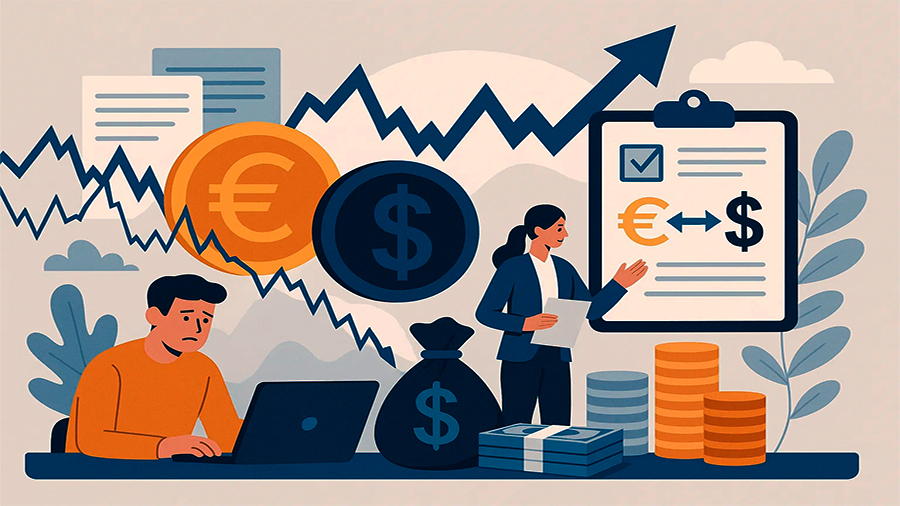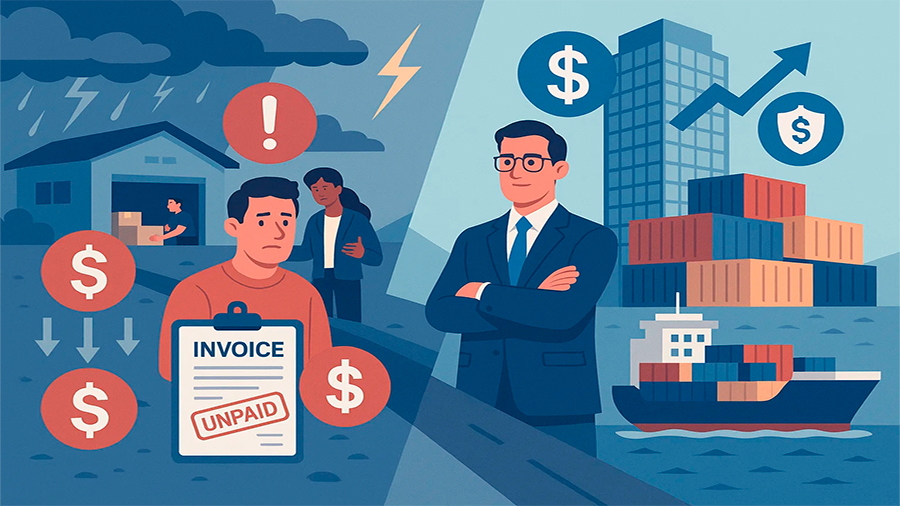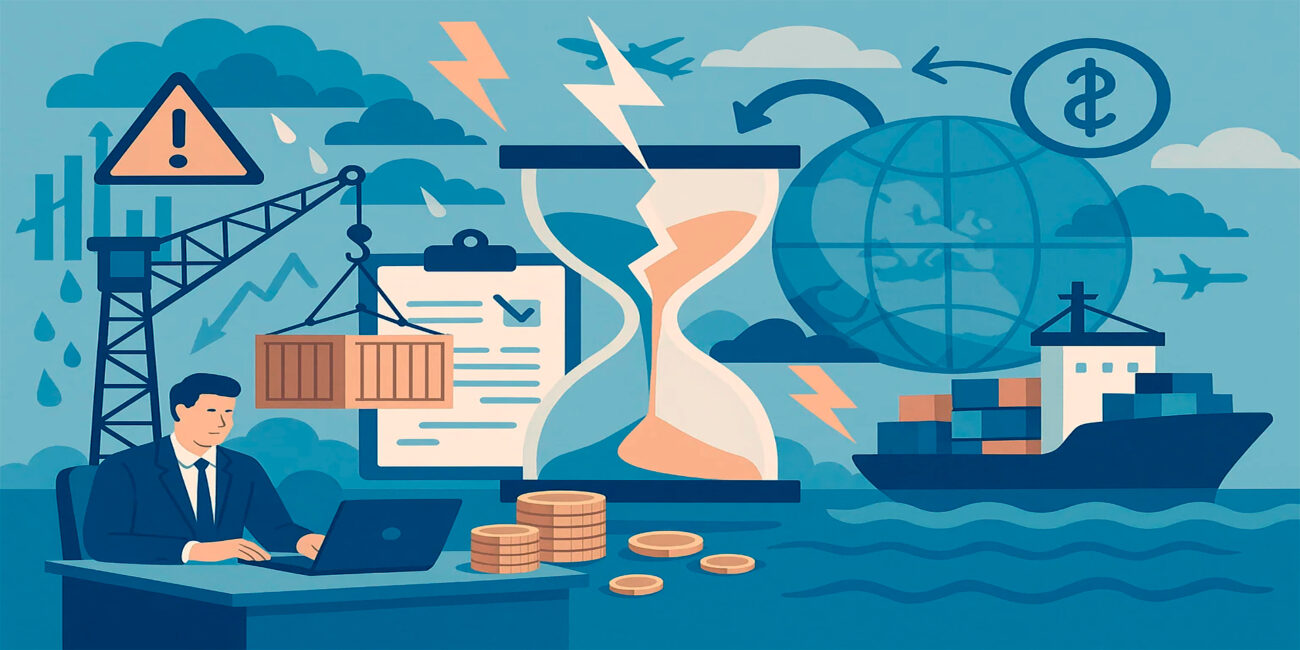Export Lending and Disruptions in Global Trade
Global trade is rarely stable for long. Currency swings, shipping delays, labor strikes, and sudden regulatory shifts all disrupt the flow of goods. For exporters, these challenges translate directly into financial risks. Export lending has become the safety net that allows companies to survive turmoil, continue fulfilling contracts, and protect jobs. Loans, guarantees, and specialized credit programs give businesses room to maneuver when the global supply chain stutters. Yet export lending is not a simple solution—it is a web of tools, obligations, and strategies that must adapt quickly to shocks.
The Fragility of Modern Trade
Containers waiting in ports, ships stuck outside canals, and sudden shifts in demand all remind us how fragile the global trading system can be. Exporters often depend on predictable timelines and stable currencies. When either breaks down, the entire financial model of a contract may collapse. A shipment delayed by weeks can lead to penalties from buyers, while a sudden depreciation of the local currency can slash profit margins. These disruptions create gaps that only financing can fill. Export lending is designed to cover those gaps, ensuring companies stay afloat until goods reach their destinations and payments arrive.
Why Export Lending Matters During Disruptions
For many exporters, lending is not an option but a necessity. Global buyers often demand extended payment terms, leaving sellers waiting months before receiving cash. Disruptions make these waits longer and riskier. Credit bridges the time between shipment and payment, providing working capital for salaries, raw materials, and logistics. Without this support, many firms would have to halt operations during crises. Export lending also provides psychological security: businesses can continue negotiating contracts knowing they have a financial cushion against unforeseen events. It is this reassurance that allows exporters to keep competing even when the environment feels unpredictable.

The Tools of Export Lending
Export finance includes multiple instruments tailored to different disruptions. Traditional loans cover upfront production costs, ensuring goods are ready on schedule. Guarantees from export credit agencies reassure foreign buyers that they will be compensated if a seller defaults. Insurance policies cover risks like non-payment or political instability, giving lenders confidence to extend credit. Factoring arrangements allow exporters to sell invoices at a discount, accessing cash immediately instead of waiting for buyers to settle. Each tool addresses a different weak point in the chain, from liquidity shortages to geopolitical uncertainty. When used together, they form a safety net that keeps trade moving even during turbulence.
Currency Risks and Exchange Volatility
Few disruptions cut as deeply as sudden currency shifts. Exporters borrowing in foreign currencies may find repayment costs skyrocketing overnight. A contract profitable in euros can quickly turn unviable if the euro weakens against the dollar. Export lending adapts by offering hedging mechanisms—forward contracts, swaps, or loans structured in multiple currencies. These reduce uncertainty, but they also add complexity and cost. Firms that fail to hedge properly can see entire deals wiped out by exchange movements. Credit programs often step in to provide predictable repayment terms, cushioning exporters against the worst shocks of volatile markets.
Shipping Delays and Logistics Breakdowns
When ports clog or vessels are rerouted, exporters face cascading costs. Goods may spoil, contracts may be breached, and buyers may demand compensation. Export lending helps by financing storage, rerouting, or additional freight charges. Without this support, many firms would be unable to absorb the unexpected expenses of disrupted logistics. Credit also allows exporters to pay suppliers on time despite delays in receiving buyer payments, preserving trust along the supply chain. In this sense, loans become more than financing—they become a buffer that keeps relationships intact when external shocks threaten to damage reputations.
Guarantees and Government Support
Export credit agencies (ECAs) play a decisive role in turbulent times. These state-backed institutions provide guarantees that protect both lenders and exporters against risks ranging from buyer insolvency to political upheaval. When private banks hesitate, ECAs step in to underwrite deals, keeping goods moving across borders. During major crises—pandemics, wars, or financial crashes—government-backed programs often expand dramatically, ensuring exporters maintain access to capital. These guarantees give lenders confidence to provide credit at reasonable rates, shielding exporters from market panic. Without such support, disruptions would quickly strangle small and medium-sized exporters, leaving global markets dominated only by the largest firms.
Surviving a Port Strike
Imagine a manufacturer shipping machinery overseas when dockworkers in the destination country go on strike. Containers remain stuck for weeks, payments are delayed, and penalty clauses in contracts loom. Without financing, the exporter risks defaulting on payroll and supplier obligations. With export lending, however, the firm accesses emergency credit lines that cover salaries and renegotiates terms with lenders using ECA guarantees. While profits shrink, the company avoids collapse. Once the strike ends, operations resume, and the exporter continues serving global clients. This scenario demonstrates how credit tools transform existential threats into manageable setbacks.
Small Exporters vs. Large Exporters
Disruptions expose the gap between large multinationals and smaller firms. Big exporters often have in-house finance teams and access to global banks. They can hedge risks and diversify markets, softening the blow of disruptions. Smaller exporters rely heavily on export lending programs to survive. For them, a single delayed payment can trigger a chain reaction of missed obligations. Credit programs designed for small businesses—short-term loans, micro-guarantees, or invoice financing—are crucial to maintaining diversity in global trade. Without such support, smaller exporters would exit the market whenever crises hit, concentrating power in fewer hands and reducing resilience across supply chains.

The Human Side of Export Lending
Behind the technical language of loans and guarantees are people—workers, suppliers, and families. When lending fails, layoffs follow. Export credit ensures salaries are paid even when buyers delay payments. It supports communities dependent on factories or farms producing for global markets. Disruptions can be devastating socially, not just economically. Access to credit softens these blows, allowing businesses to maintain jobs and social stability. This human dimension often drives governments to expand export credit programs during crises. By protecting exporters, they indirectly protect entire communities that rely on trade.
The Future of Export Lending
Global trade disruptions are not going away. Climate events, geopolitical conflicts, and digital supply chain vulnerabilities will create new challenges. Export lending is evolving to meet them. Digital platforms are emerging that provide real-time risk assessments, adjusting credit terms instantly as conditions change. Blockchain technology is being tested to secure transactions and reduce fraud. Green export lending is rising, rewarding companies that reduce carbon footprints in global trade. These innovations suggest a future where financing is not only a safety net but also a strategic guide, steering exporters toward resilience and sustainability. The exporters who thrive will be those who treat lending not just as money borrowed but as a tool for building long-term stability.
Conclusion
Export lending has become inseparable from the realities of global trade. From currency swings to shipping breakdowns, disruptions constantly threaten exporters’ financial stability. Loans, guarantees, insurance, and government programs provide the support needed to endure. Whether for large corporations or small businesses, access to export credit determines who can withstand crises and who must step back. As global trade becomes more turbulent, the role of export lending will only expand. In this environment, exporters who learn to navigate credit tools strategically will not only survive but also position themselves as leaders in an uncertain future.


